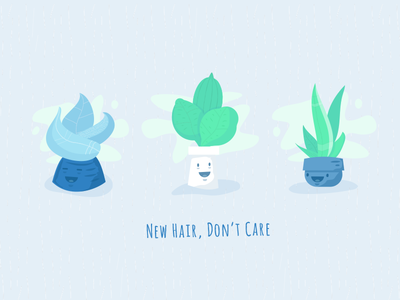Al Power is a Dublin-based designer who recently transitioned into his first remote design role. Drawing on his own experience, Al explains why he decided to take a remote job and also lends some advice to creatives who are considering remote life or who are currently in transition.
For the last sixteen years, I’ve spent all of my work life as a full-time, in-house designer, heading to the office Monday through Friday. This was the norm up until recently when I started to notice more and more attractive remote design roles emerge.
Fast forward to about four months ago—I took the leap and accepted a remote job as a Senior Visual Designer at Clubhouse.io, a project management tool. While it’s only been a few months, I can say with confidence that going remote was the right move for me.
In this post, I’ll be sharing the main reasons why I went remote, some key things to consider before accepting a remote offer, and finally, a few tips that are working for me in getting acclimated to a new distributed team. For all of you creatives out there thinking about going remote, I hope this is helpful!

Why I went remote
1. More job opportunities: For me, as a designer based in Ireland, there has always been a relatively limited pool of design roles in my area. With design teams opening their doors to folks outside of their geographic region, I started to wonder why I was limiting myself to jobs in my area when the whole world was calling.
2. Flexible hours: This was huge for me. With a young family and a two-hour round-trip commute to get to the office every day, the flexibility of working where and when I wanted was very appealing.
3. Higher focus: This might sound odd, and without trying to sound anti-social, the constant office chatter in a normal workplace can be very distracting to getting work done. Having your own dedicated workspace free of interruptions is a huge productivity booster.
4. The chance to travel: My new company is distributed but also has headquarters in Manhattan, which means I get the chance to travel to New York from time to time. As a remote worker, you’ll have the opportunity to travel to new places and be connected to people from all walks of life, all over the globe.
Setting expectations
With all of the benefits of remote work, you might be eager to find that next great position. However, there are a few things I’ve learned that you’ll want to be aware of (and ok with) before you go signing any offers:
1. Isolation is real but can be avoided: Working from the comfort of your own home means you don’t necessarily have to leave the house to get work done. If you aren’t proactive about getting out there and interacting with people in the real world, let’s just say you might catch yourself talking to your office cactus. This especially rings true for introverts who may need to make an extra effort in this area.
2. Flexibility may come at a cost: Depending on the company and where other folks on the team are located, there’s a chance you’ll find yourself dialing into meetings at strange times. Keep in mind there may be business needs that outweigh your personal preferences.
3. Communication will look different: By nature, daily interactions with your team will change in a remote design role. Be ready for a lot more text-based conversations during hours that might vary from what you’re used to. For me, it’s not strange to be chatting with a co-worker on Slack at 11:00 pm. This will look different for every team, so try to clarify what’s expected of you when it comes to availability.

Daily tips for remote success
With the above in mind, here are a few things that are working for me in creating a smooth transition into remote work life:
1. Find a dedicated workspace: With the emergence of remote work comes a ton of co-working spaces which are great workspace options if you thrive off of being surrounded by people. Whatever office space you choose, make sure it’s comfortable for you and fosters an atmosphere for productivity.
2. Get to know the wider business: Spark up conversations with employees who aren’t on your direct team and try to get to know them for who they are rather than simply what they do. Without your typical in-office “watercooler moments”, you won’t unexpectedly run into Debbie from Accounting and chat about how the day is going. Make an effort, be open, and invite people to get to know the real you.
3. Share your work often: It’s important for your co-workers to see that you’re open at all times for a conversation about your work. If you think the wider team would be interested in checking out what you’re working on, don’t be afraid to show them. From my experience, people love looking at designs so don’t hesitate to over-share your work!
4. Communicate your availability: While you aren’t expected to be available at all times, people on your team should be aware of what your work hours are. Do this to avoid any availability miscommunications but also to create and enforce boundaries between work and your personal life.
5. Try to keep a consistent routine: I’ve found that having a set routine is vital to a happy remote work life. Remember to eat meals at a normal time and pencil in some time to exercise. As strange as it sounds, these are some basic things that tend to slip when your life becomes so flexible.
Although I’m still relatively new to remote life, I have to say I’m totally loving it. Between the new challenges I get to tackle at Clubhouse and the amazing work/life balance I now have, it’s no wonder designers are transitioning into remote roles at an incredible rate. While it might feel risky taking the leap into a completely new lifestyle, I hope the considerations and tips I’ve provided from my experience offer some helpful insight!
Want to keep up with Al? He invites you to pick his brain at Dribbble, Twitter, and at alpowerillustrates.com.
For more tips, insight, and articles about remote work, check out 10 tips from team Dribbble for WFH success, and Building a cohesive remote culture.
Find more Community stories on our blog Courtside. Have a suggestion? Contact stories@dribbble.com.










